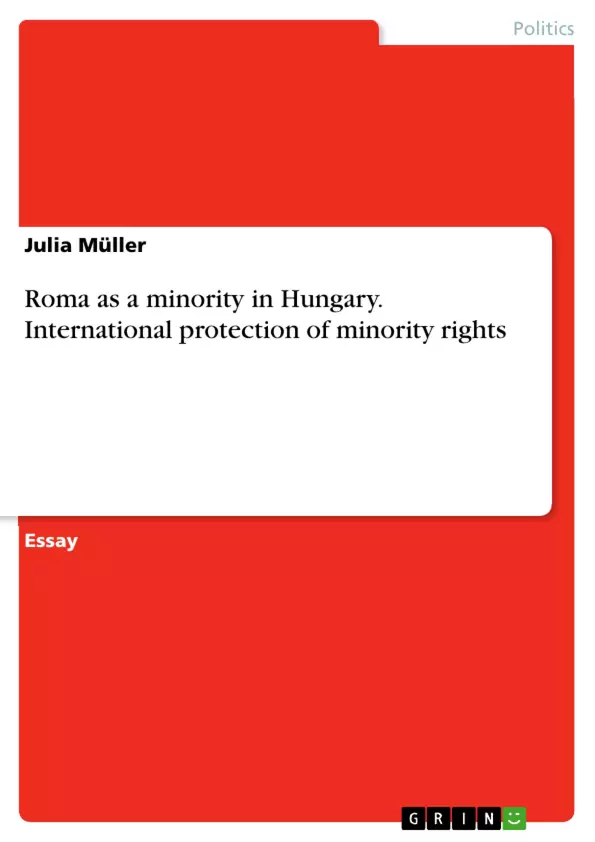This essay examines Roma as a minority in Hungary. Roma people represent one of the largest ethnic minority group within Europe. It is exceptionally difficult to assert the population of Roma accurately because some governments do not count Roma in their census figures or Roma hide their ethnic origin out of anxiety to face discrimination.
Nevertheless, it is estimated that between 10 to 12 million Roma live in the continent of Europe today. The term Roma does not refer to a homogeneous ethnic group but rather summarizes various groups with a different culture and history. The language “Rromanës” can be considered to be the common language between Roma people but it has numerous dialects and many Roma have been linguistically assimilated and speak Hungarian. With the creation of nation states in the 18. and 19. century, attempts were made to make the newly developed states “linguistically and culturally homogeneous”.
The new nation states tried to reach the goal of national unity by implementing a centralized government, national symbols, one official state language as well as state supported cultural development. Non-dominant groups put an effort into keeping their individual cultural, religious, ethnic or linguistic heritages from extinction. They were anxious about the future of the ongoing process of nation-building and democratization which equalizes to the lead of the majority group.
Inhaltsverzeichnis (Table of Contents)
- Introduction
- Definition of Minorities
- Roma People
- International Legal protection of minorities
- Roma people in Hungary
- Protection measures of Roma in Hungary
- Examination
- Conclusion
Zielsetzung und Themenschwerpunkte (Objectives and Key Themes)
The main objective of this essay is to analyze the situation of Roma people as a minority in Hungary and to explore the international and domestic legal frameworks aimed at protecting their rights.
- The historical and societal context of minority groups in nation-states
- The definition and recognition of minorities in international law
- The challenges faced by Roma people, including discrimination, poverty, and exclusion
- The role of international law in protecting minority rights
- The specific situation of Roma people in Hungary and the effectiveness of protection measures
Zusammenfassung der Kapitel (Chapter Summaries)
- Introduction: This chapter introduces the historical context of nation-building and the emergence of minority groups. It highlights the challenges faced by minorities in preserving their cultural identities amidst attempts at national homogenization.
- Definition of Minorities: This chapter delves into the complexities of defining minorities, examining both objective and subjective factors, as well as the distinction between positive and negative minorities. It highlights the significance of defining minorities for ensuring their rights.
- Roma People: This chapter explores the origins, history, and current situation of Roma people in Europe. It discusses the challenges they face, including discrimination, poverty, and limited access to education, healthcare, and social services.
- International Legal Protection of Minorities: This chapter examines the development of international legal frameworks aimed at protecting minority rights, including the International Convention on the Elimination of All Forms of Racial Discrimination and the Declaration on the Rights of Persons Belonging to National or Ethnic, Religious and Linguistic Minorities.
Schlüsselwörter (Keywords)
The essay focuses on the key themes of minority rights, Roma people, discrimination, poverty, exclusion, international law, nation-building, cultural identity, and social integration.
- Quote paper
- Julia Müller (Author), 2021, Roma as a minority in Hungary. International protection of minority rights, Munich, GRIN Verlag, https://www.grin.com/document/1214640



